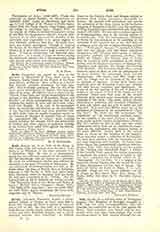

Aviz, ORDER OF, a military body of Portuguese knights.—The Kingdom of Portugal, founded in 1128, was not only contemporaneous with the Crusades but conducted one of its own against the Moors. Some crusaders were bound only by temporary vows, and when these expired they would sometimes return to their country although the war was not ended. This accounts for the favor with which military orders were regarded beyond the Pyrenees, in Portugal as well as in Spain; for in them the vow of fighting against the infidels was perpetual, like other monastic vows. Knights Templars were found in Portugal as early as 1128, and received a grant from Queen Teresa in the year of the Council of Troyes, which confirmed their early statutes. A native order of this kind sprang up in Portugal about 1146. Affonso, the first king, gave to it the town of Evora, captured from the Moors in 1211, and the Knights were first called “Brothers of Santa Maria of Evora”. Pedro Henrfquez, an illegitimate son of the king’s father, was the first grand master. After the conquest of Aviz the military castle erected there became the motherhouse of the order, and they were then called “Knights of St. Benedict of Aviz”, since they adopted the Benedictine rule in 1162, as modified by John Ziritu, one of the earliest Cistercian abbots of Portugal. Like the Knights of Calatrava in Castile, the Knights of Portugal were indebted to the Cistercians for their rule and their habit—a white mantle with a green fleur-de-lysed cross. The Knights of Calatrava also surrendered some of their places in Portugal to them on condition that the Knights of Aviz should be subject to the visitation of their grand master. Hence the Knights of Aviz were sometimes regarded as a branch of the Calatravan Order, although they never ceased to have a Portuguese grand master, dependent for temporalities on the Portuguese king. At the accession of King Ferdinand (1383) war broke out between Castile and Portugal. When Joao I, who had been grand master of the Knights of Aviz, ascended the throne of Portugal, he forbade the knights to submit to Castilian authority, and consequently, when Gonzalvo de Guzman came to Aviz as Visitor, the knights, while according him hospitality, refused to recognize him as a superior. Guzman protested, and the point remained a subject of contention until the Council of Basle (1431), when Portugal was declared to be in the wrong. But the right of the Calatravans was never exercised, and the next grand master of the Knights of Aviz, Rodrigo of Sequirol, continued to assert supreme authority over them.
The mission of the military orders in Portugal seemed to fail after the overthrow of Moslem domination, but the Portuguese expeditions across the sea opened up a new field for them. The first landings of Europeans in Africa, the conquest of Ceuta by King Joao I (1415), the attacks upon Tangier under Joao’s son Duarte (1437), were also crusades, inspired by a religious spirit and sanctioned by similar papal Bulls. The Knights of Aviz and the Knights of Christ, scions of the Knights Templars, achieved deeds of valor, the former under the Infante Fernando, the latter under Henrique, brother of King Duarte. Fernando displayed a no less heroic forbearance during his six years of captivity among the Moslems, a long martyrdom which after his death placed him among the Blessed (Acta SS., June 5). This splendid enthusiasm did not last. Soon the whole nation became affected by the wealth that poured in, and the Crusade in Africa degenerated into mere mercantile enterprise; the pontifical Bulls were made a vulgar means of raising money, and after the grand mastership of the order (1551) had been vested in the king in perpetuity, he availed himself of its income to reward any kind of service in the army or the fleet. If the wealth of the Knights of Aviz was not as great as that of the Knights of Christ, it was still quite large, drawn as it was from some forty-three commanderies. The religious spirit of the knights vanished, and they withdrew from their clerical brothers who continued alone the conventual life. They were dispensed from their vow of celibacy by Alexander VI (1492), who tolerated their marriage to prevent scandalous concubinage; Julius III (1551) allowed them to dispose freely of their personal properties. Nobility of birth remained the chief requirement of aspirants to the mantle, a requirement confirmed by a decree of 1604. Queen Maria I, supported by Pope Pius VI (August 1, 1789), attempted a last reformation and failed. Finally, the military orders were suppressed by Dom Pedro, after the downfall of the Miguelist usurpation (1834).
CH. MOELLER

